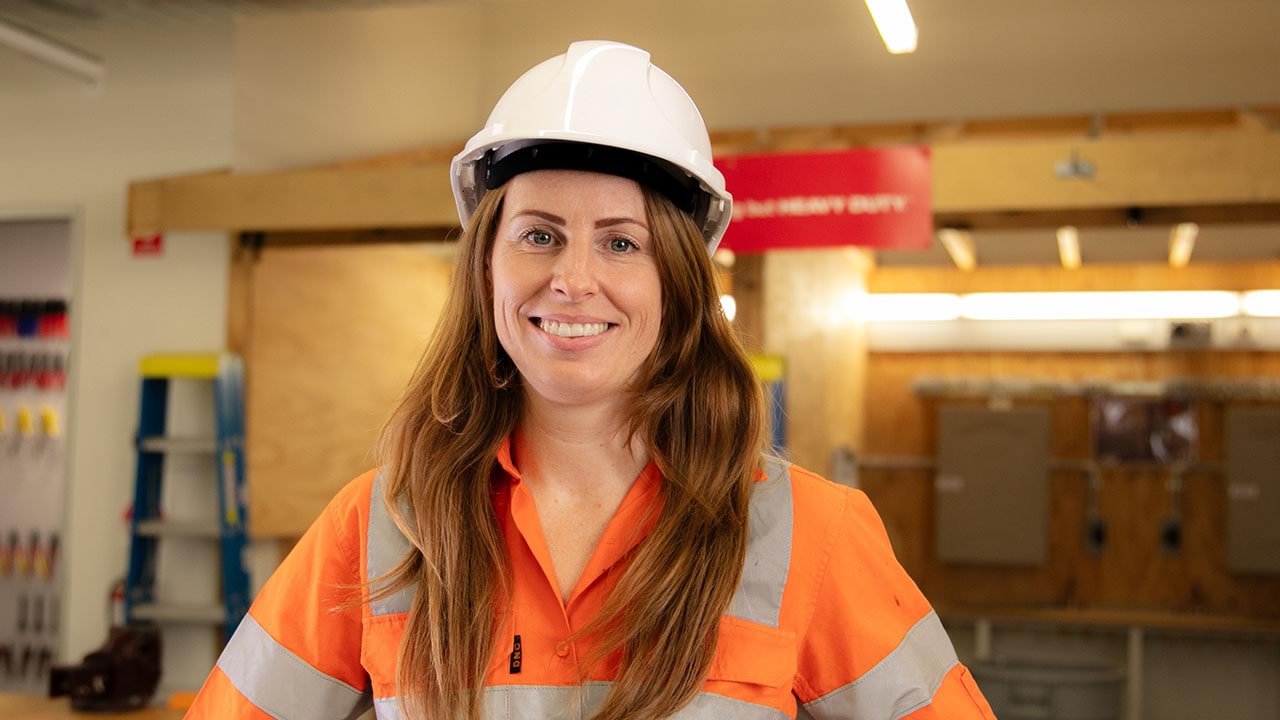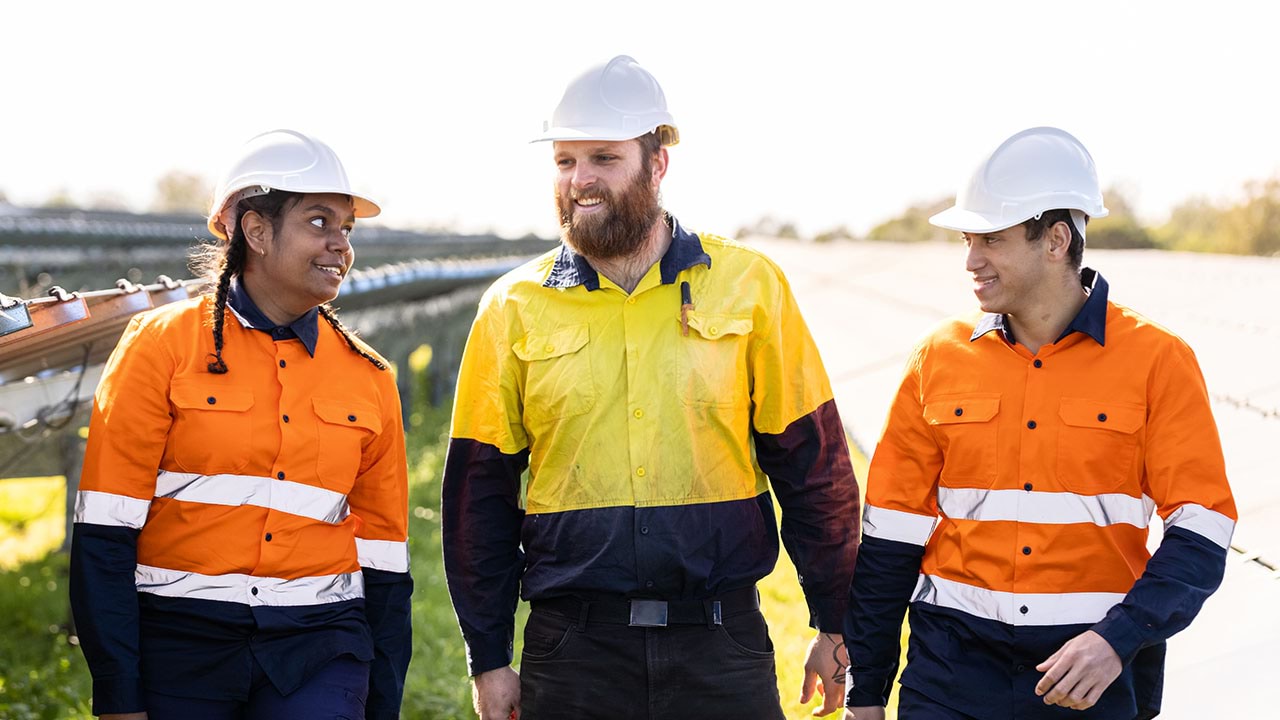Electricians install and maintain electrical equipment for homes and businesses. The move to clean energy is changing how we source and use energy. Victoria needs skilled workers who can adapt.
Find out what an electrician does and the related Vocational Education and Training (VET) courses and pathways you can take to secure a job.
What is an electrician?
Electricians set up and manage electrical products and systems for homes and businesses. As an electrician working in clean energy, you will:
- develop detailed plans
- diagnose electrical faults
- perform repairs
- install and test systems
- help ensure systems meet clean energy objectives.
Find out more about electricians(opens in a new window) and these related jobs on the Victorian Skills Gateway(opens in a new window):
- airconditioning and refrigeration mechanic(opens in a new window)
- electronic equipment trades worker(opens in a new window)
- electronic instrument trades worker (general)(opens in a new window)
- telecommunications technician(opens in a new window).
Related training courses
Explore these related TAFE and training courses on the Victorian Skills Gateway(opens in a new window):
- building construction and improvement(opens in a new window)
- civil construction(opens in a new window)
- construction management(opens in a new window)
- electrical machine repair(opens in a new window)
- electricity supply industry(opens in a new window)
- electrotechnology(opens in a new window)
- home energy efficiency and sustainability(opens in a new window)
- working safely in the solar industry(opens in a new window).
You may be eligible for government funding to help pay for your course.
Median salary
The median weekly earnings for electricians in Australia is $2,204.
Source: Jobs and Skills Australia(opens in a new window)
Note this salary is current as of January 2025 and is indicative only. A range of salaries apply to different roles across the industry.
Job demand in Victoria
Below are the employment projections for electrician jobs in Victoria. Figures show the number of workers in 2024 and the new workers expected to enter the workforce by 2027 and 2034.
‘New workers expected’ accounts for workers adding new jobs to the economy and replacing retirees over the next 3 and 10 years. These projections are estimates only. There will be additional jobs available as people move between jobs and industries.
| Region | Workers 2024 | New workers expected by 2027 | New workers needed by 2034 |
|---|---|---|---|
| Victoria | 42,347 | 4,846 | 14,433 |
| Melbourne – inner metropolitan | 4,271 | 567 | 1,624 |
| Melbourne – inner south-east metropolitan | 1,711 | 193 | 523 |
| Melbourne – southern metropolitan | 7,586 | 862 | 2,484 |
| Melbourne – northern metropolitan | 6,378 | 830 | 2,575 |
| Melbourne – eastern metropolitan | 5,587 | 579 | 1,684 |
| Melbourne – western metropolitan | 5,483 | 825 | 2,468 |
| Ballarat and surrounds (Central Highlands) | 1,226 | 152 | 379 |
| Bendigo, Echuca and surrounds (Loddon Campaspe) | 1,745 | 166 | 478 |
| Geelong, Colac and surrounds (Barwon) | 2,381 | 320 | 805 |
| Gippsland | 2,179 | 118 | 601 |
| Horsham and surrounds (Wimmera Southern Mallee) | 373 | 21 | 68 |
| Mildura, Swan Hill and surrounds (Mallee) | 677 | 39 | 125 |
| Shepparton, Seymour and surrounds (Goulburn) | 1,009 | 84 | 233 |
| Wangaratta, Wodonga and surrounds (Ovens Murray) | 1,072 | 51 | 263 |
| Warrnambool, Hamilton and surrounds (Great South Coast) | 667 | 37 | 121 |
Source: Victorian Skills Authority Employment Projections Dashboard
Career story

Libby’s life as a new mum and first-year apprentice
“I’ve found a much better work-life balance in the construction industry. I feel like every hour that I work I’m valued. I think as a female you do bring something different to the table.”
Resources to plan your next steps
Visit our clean energy industry profile to find out about:
- what it’s like to work in clean energy, and some of the jobs you could do
- training and skills to work in the industry, and financial assistance to help pay for your course
- help getting a job in clean energy, and industry job projections for Victoria
- other free resources and advice to plan your training and career.
Explore growing industries in your region
Updated



